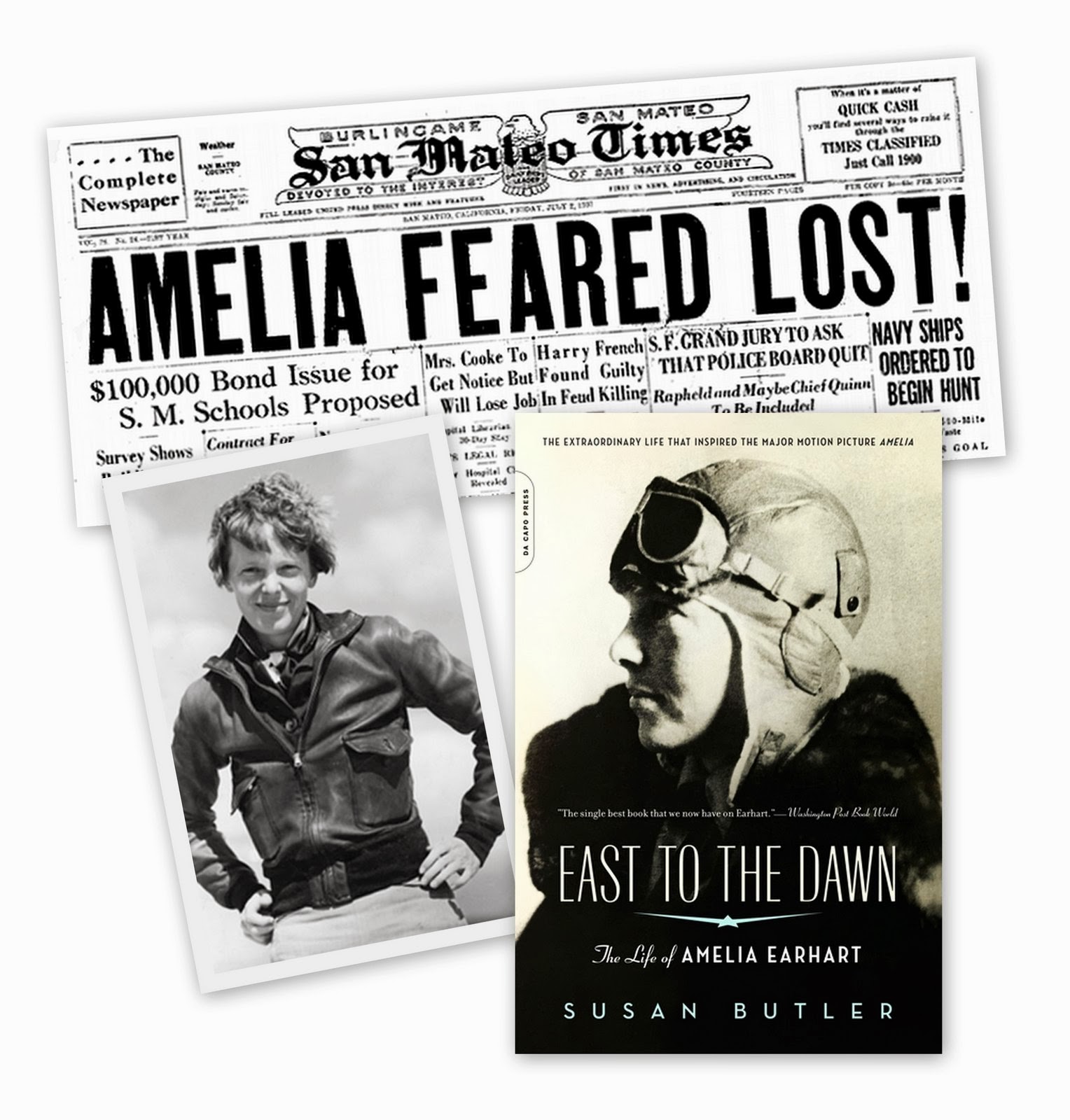Amelia Earhart was born on 24 July 1897 in Atchison, Kansas. Her flying career began in Los Angeles in 1921 when, at age 24, she took flying lessons from Neta Snook and bought her first airplane– a Kinner Airstar. Due to family problems, she sold her airplane in 1924 and moved back East, where she took employment as a social worker.
Four years later, she returned to aviation bought an Avro Avian airplane and became the first woman to make a solo-return transcontinent…al flight. From then on, she continued to set and break her own speed and distance records, in competitive events, as well as personal stunts promoted by her husband George Palmer Putnam.
Earhart’s name became a household word in 1932 when she became the first woman, and second person, to fly solo across the Atlantic Ocean, on the fifth anniversary of Charles Lindbergh’s feat, flying a Lockheed Vega from Harbor Grace, Newfoundland to Londonderry, Ireland. That year, she received the Distinguished Flying Cross from the Congress, the Cross of Knight of the Legion of Honor from the French Government, and the Gold Medal of the National Geographic Society from President Hoover.
In January 1935 Earhart became the first person to fly solo across the Pacific Ocean from Honolulu to Oakland, California. Later that year she soloed from Los Angeles to Mexico City and back to Newark, N.J. In July 1936 she took delivery of a Lockheed 10E “Electra,” financed by Purdue University & started planning her round-the-world flight.
It’s been 80 years since Earhart vanished, yet her disappearance remains just as big a mystery today as it did generations ago. Before she disappeared, Earhart had already broken gender barriers by completing solo flights male pilots hadn’t. She was the first woman to fly over the Atlantic, the first person to fly over the Atlantic twice and first person to fly solo across the Pacific from Honolulu, Hawaii, to Oakland, California.
The famed aviator last heard from on July 2, 1937, as she attempted to make the first around-the-world flight along the equator with navigator Fred Noonan. Earhart was officially declared dead in 1939 after the U.S. government concluded she crashed somewhere in the Pacific Ocean, but her remains were never found.
I have six reasons why the next person rates as an American Hero
1. Rachel Carson, the ecologist … who kicked the hornet’s nest, wrote a book that needed no subtitle. Published fifty five years ago this September, Silent Spring rocketed to the top of the bestseller list, prompted a meeting with the president’s science advisers, occasioned congressional hearings, and circled her neck with medals of honor.
It also let loose swarms of invective from the pesticide industry. Throughout it all, Carson remained calm. Friends and foes alike praised her graceful comportment and gentle voice. Also, her stylish suits and trim figure. Nevertheless, her various publicity photos (with microscope; in the woods; outside her summer cottage in Maine; at home in Maryland) look as if the same thought bubble hovers above them all: I hate this.
2. In the later portraits, Carson was dying of breast cancer. It was a diagnosis she hid out of fear that her enemies in industry would use her medical situation to attack her scientific objectivity and, most especially, her carefully constructed argument about the role that petrochemicals (especially pesticides) played in the story of human cancer.
But behind her unflappable public composure, Carson’s private writings reveal how much physical anguish she endured. Bone metastases. Radiation burns. Angina.
Knowing this, you can imagine her patience running out during the interminable photo shoots. The wretched wig hot and itchy under the lights. The stabbing pains (cervical vertebrae splintered with tumors) that would not, would not relent.
3. In the iconic Hawk Mountain photo, Rachel Carson is truly beautiful. Her smile looks natural rather than forced. Posed on a rocky summit (see above), she is wearing a badass leather jacket and wields a pair of leather-strapped binoculars. So armed, she scans the horizon. At her feet, the whole of Berks County, Pennsylvania, unfurls, forest and valley, field and mountain, like a verse from a Pete Seeger song.
4. Hawk Mountain, along the Appalachian flyway, is an officially designated refuge for raptors. As with so many sanctuaries, it started out as a hunting ground with bounties.
By the mid-1930s, it had become the spot in Pennsylvania to witness the annual fall migration of hawks. Rachel Carson loved it here. She also wrote about her experiences in a never-finished, never-published essay titled “Road of the Hawks.” According to biographer Linda Lear—who gathered the fragments into the collection Lost Woods: The Discovered Writing of Rachel Carson—the essay is also notable not only for its careful analysis of bird behavior and knowledge of geology but also because Carson traced the origin of her airy lookout to Paleozoic marine organisms.
5. And always in these Appalachian highlands there are reminders of those ancient seas that more than once lay over all this land . . . these whitened limestone rocks on which I am sitting were formed under that Paleozoic ocean, the myriad tiny skeletons of creatures that drifted in its waters. Now I lie back with half closed eyes and try to realize that I am at the bottom of another ocean—an ocean of air on which the hawks are sailing.
Preview PBS American Experience Rachel Carson

Preview Pete Seeger – If I Had a Hammer







